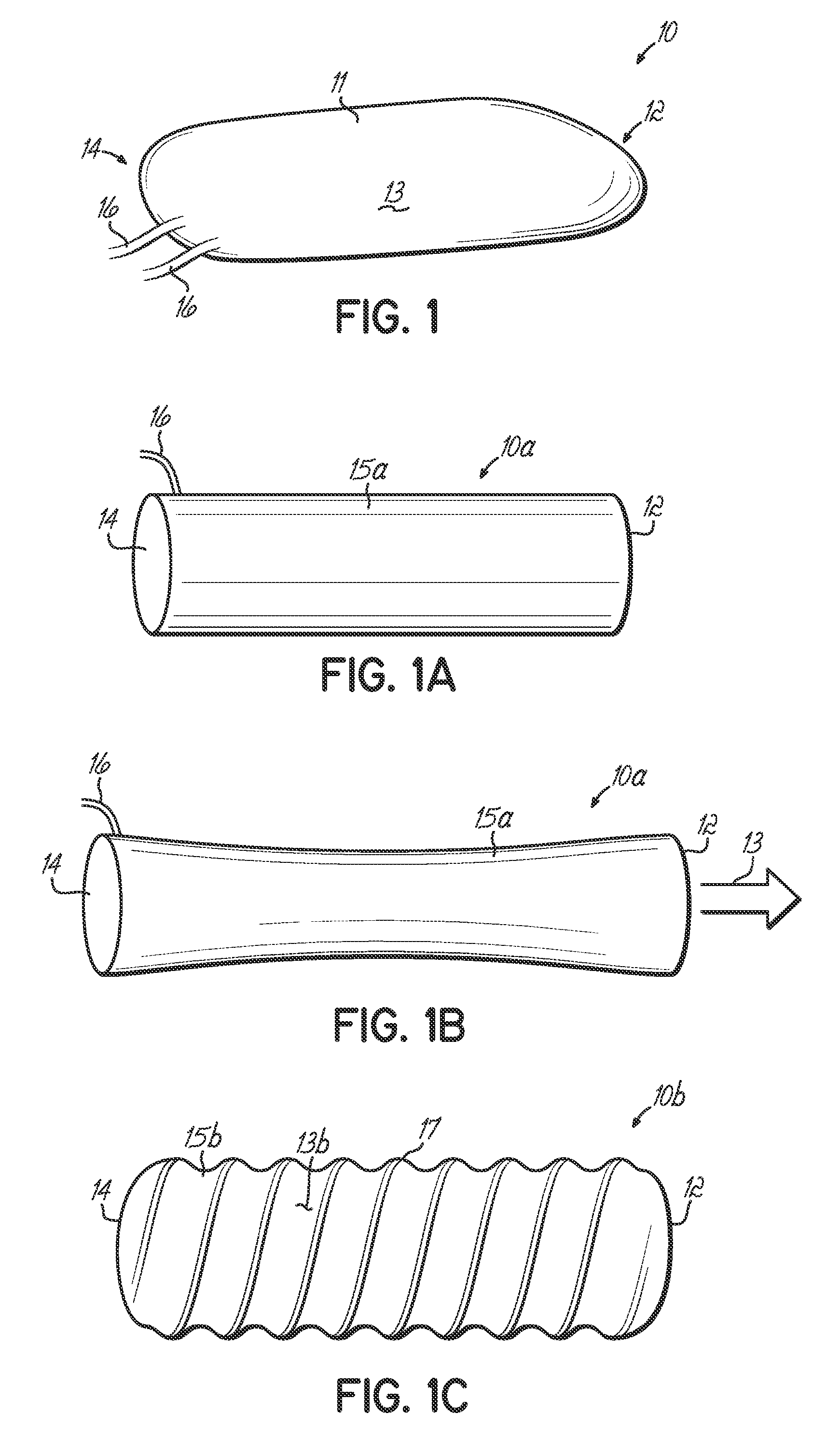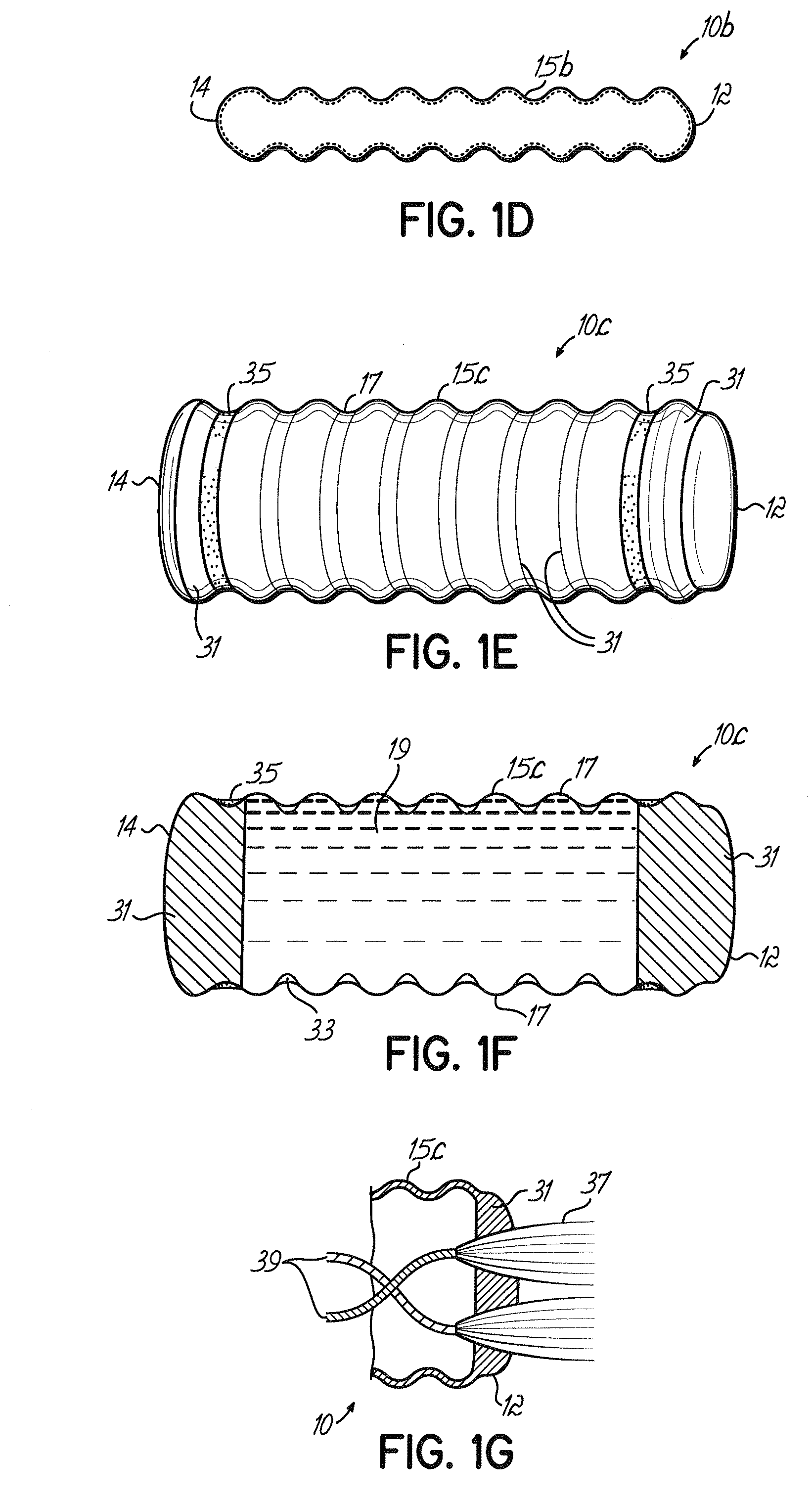Muscle energy converter with smooth continuous tissue interface
a tissue interface and muscle energy technology, applied in the direction of dynamo-electric components, dynamo-electric machines, therapy, etc., can solve the problems of electrical conduits comprised of wires and tubes penetrating the skin, electrical cross-coupling of trans-integumental transformers, and the risk of power-draining electromagnetic cross-coupling
- Summary
- Abstract
- Description
- Claims
- Application Information
AI Technical Summary
Problems solved by technology
Method used
Image
Examples
Embodiment Construction
[0045]With reference to FIG. 1, a converter 10 is an elongated structure generally having a length and width similar to those of the tendon of a muscle (not shown) to which they are applied and a thickness not exceeding an order of magnitude greater than the thickness of the native tendon. Converter 10 has a body 11 having a tissue-facing surface 13, a mobile end 12 and a longitudinally opposed relatively stationary end 14. One or more energy conduits 16 protrude from the relatively stationary end 14 to conduct energy from the converter 10 to a power-consuming device (not shown) such as a circulatory device utilizing the energy from the converter 10. Energy conduits 16 may comprise, for example, electrical wires, hydraulic tubes, mechanical conduits such as a cable-in-sheath, or any other suitable mechanism.
[0046]The mobile end 12 of the converter 10 is connected to a muscle at a point proximate the musculotendinous junction. Methods of connecting the converter 10 may for example in...
PUM
 Login to view more
Login to view more Abstract
Description
Claims
Application Information
 Login to view more
Login to view more - R&D Engineer
- R&D Manager
- IP Professional
- Industry Leading Data Capabilities
- Powerful AI technology
- Patent DNA Extraction
Browse by: Latest US Patents, China's latest patents, Technical Efficacy Thesaurus, Application Domain, Technology Topic.
© 2024 PatSnap. All rights reserved.Legal|Privacy policy|Modern Slavery Act Transparency Statement|Sitemap



